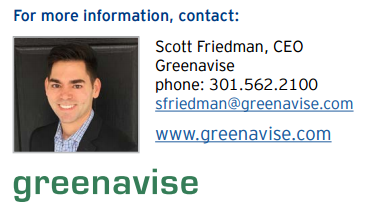 As a commercial energy efficiency professional, the first question I am usually asked when discussing a proposed energy efficiency project is what’s the payback? This generally means the simple payback or how long will it take for the cumulative energy efficiency savings to equal the initial capital expense. This is the most widely used and easiest to understand method of evaluating a project.
As a commercial energy efficiency professional, the first question I am usually asked when discussing a proposed energy efficiency project is what’s the payback? This generally means the simple payback or how long will it take for the cumulative energy efficiency savings to equal the initial capital expense. This is the most widely used and easiest to understand method of evaluating a project.
As someone with a real estate background, this evaluation method strikes me as a terrible metric that misleads the decision maker to make the wrong decision. It ignores the potential significant increase to your property value from implementing a commercial energy efficiency project. There is often an arbitrary minimum payback threshold that has to be met such as 2 years, 3 years or 5 years in order for an owner/manager to even consider moving forward with an energy efficiency project.
By looking at an energy efficiency project’s simple payback they are missing out on some terrific investment opportunities. If I told most real estate owners that I have an investment option that can return more than 3 times their money, they usually want to know more about it.
- At a 10 cap, $1 of bottom line savings (increased NOI) is equal to $10 in value.
- At a 7 cap, $1 of bottom line savings (increased NOI) is equal to $14.29 in value.
- And at a 5 cap, $1 of bottom line savings (increased NOI) is equal to $20 in value.
If a $50,000 capital investment in a commercial energy efficiency project has a simple payback period of 5 years it will turn off a lot of owners. This would be a mistake because this project would generate $10,000 per year of savings on the electric bill. The $10,000 per year would be a bottom line savings so it would go straight to the NOI. Assuming a cap rate of 7% if you divide the increased NOI by the cap rate you get over $142,000 of value creation.
There are many ways to go about reducing your utility expenses. Energy procurement, energy monitoring and energy reduction are the three main categories.
Energy procurement is a great place to start. Deregulated markets provide a unique opportunity to save money on utilities. In many states, you no longer have to purchase your electricity generation or gas supply from your local utility company at a variable rate. This allows customers to choose who they purchase from and at what rate. It also helps with budgeting your energy spend by locking in the future rate (as approximate usage can be predicted from past consumption). Deregulation is a great advantage for the savvy manager to create significant value but it is important to obtain expert advice to properly shop rates, time the market and decide on commitment durations.
It matters where you begin and how you approach it but, no matter how you look at it, reducing your utility expense is simply a great investment.
Scott Friedman is the CEO of Greenavise, an energy management services company that specializes in helping business and real estate owners reduce their utility expenses. Greenavise takes a hands on customized approach with its clients. Call or email today for a free commercial energy efficiency project consultation. Scott can be reached at 301.562.2100 or sfriedman@greenavise.com



